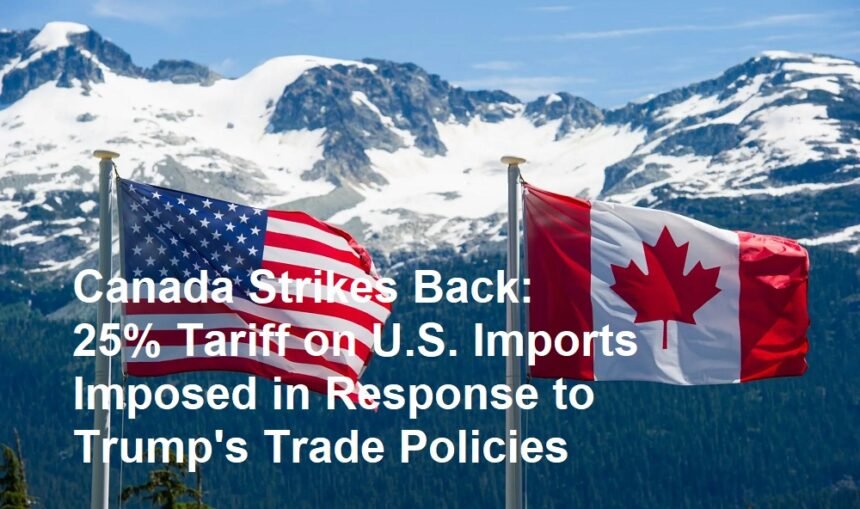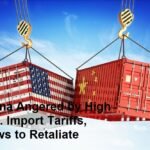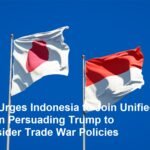In a dramatic escalation in North American trade relations, the Canadian government has announced the imposition of a 25% tariff on a wide range of U.S. imported products. This decisive move comes as a direct response to recent trade policies and rhetoric advanced by former U.S. President Donald Trump, which Canadian officials claim have unfairly disadvantaged Canadian industries and workers.
The new tariff measure, announced by Canada’s Minister of International Trade during a press conference on February 10, 2025, is aimed at counterbalancing what Canada describes as aggressive protectionist policies emanating from the United States. “Our economy is built on fair trade and mutual respect,” said Trade Minister Sarah McCall. “The unilateral actions and inflammatory rhetoric from the Trump administration have forced our hand. We cannot allow our industries to be undercut by artificially low prices resulting from unfair trade practices.”
Canada’s decision to impose the tariff marks a significant shift in bilateral trade dynamics that have traditionally been marked by cooperation and shared prosperity. The targeted tariffs will affect a broad range of U.S. products, including manufactured goods, agricultural produce, and certain consumer electronics. Canadian authorities have indicated that the selection of products was based on a comprehensive review of trade flows and the identification of sectors where American imports have significantly impacted domestic industries.
For many Canadian businesses, this tariff is seen as a necessary protective measure. Over the past several years, several Canadian manufacturing sectors have reported declining revenues due to stiff competition from U.S. exports, which some analysts attribute to the lower production costs and subsidies prevalent in the American market. “We have been witnessing a gradual erosion of market share in key industries,” explained David Chen, an economist at the Canadian Economic Institute. “A 25% tariff might sound steep, but it is intended to level the playing field and provide our domestic companies with a much-needed buffer against unfair competition.”
The tariff also carries broader geopolitical implications. Trade experts note that while Canada and the United States have historically enjoyed a robust economic partnership, recent years have seen rising tensions over issues such as intellectual property rights, environmental regulations, and market access. Trump’s vocal support for American industries, coupled with his frequent criticism of trading partners, has contributed to an atmosphere of uncertainty and prompted Canada to reassert its economic sovereignty.
U.S. business leaders have reacted with caution and concern. Several major American exporters have begun reassessing their supply chains and pricing strategies in light of the new Canadian tariffs. “This is a wake-up call for U.S. companies that have long enjoyed the benefits of close economic ties with Canada,” said Michael Andrews, a trade analyst based in New York. “They now face the dual challenge of adapting to higher costs and managing the political fallout from a trade dispute with one of their closest partners.”
In response to the tariff, representatives from the Trump administration have criticized Canada’s move as “unfair” and “politically motivated.” However, U.S. officials have also indicated a willingness to engage in dialogue with Canadian counterparts to resolve the matter through negotiations, emphasizing that long-term bilateral trade remains a priority for both nations.
The new tariff is expected to have a mixed impact on the Canadian economy. While it may provide immediate relief to domestic industries hurt by U.S. competition, some analysts warn that higher import costs could eventually be passed on to consumers in the form of increased prices. Nevertheless, many Canadian policymakers argue that the tariff is a necessary step to protect jobs and ensure a balanced trade relationship in the long run.
As both countries brace for the unfolding consequences of this new trade policy, the international community is watching closely. This development not only challenges longstanding economic ties between the United States and Canada but also signals a broader trend of rising protectionism amid shifting global trade dynamics.
In conclusion, Canada’s decision to impose a 25% tariff on U.S. imports is a bold response to what it perceives as unfair trade practices driven by former President Trump’s policies. While the move may introduce short-term economic disruptions, Canadian officials are confident that it will ultimately safeguard domestic industries and promote a more equitable trading environment between the two nations.













